Saba Anwar
POLAR: A Benchmark for Multilingual, Multicultural, and Multi-Event Online Polarization
May 27, 2025Abstract:Online polarization poses a growing challenge for democratic discourse, yet most computational social science research remains monolingual, culturally narrow, or event-specific. We introduce POLAR, a multilingual, multicultural, and multievent dataset with over 23k instances in seven languages from diverse online platforms and real-world events. Polarization is annotated along three axes: presence, type, and manifestation, using a variety of annotation platforms adapted to each cultural context. We conduct two main experiments: (1) we fine-tune six multilingual pretrained language models in both monolingual and cross-lingual setups; and (2) we evaluate a range of open and closed large language models (LLMs) in few-shot and zero-shot scenarios. Results show that while most models perform well on binary polarization detection, they achieve substantially lower scores when predicting polarization types and manifestations. These findings highlight the complex, highly contextual nature of polarization and the need for robust, adaptable approaches in NLP and computational social science. All resources will be released to support further research and effective mitigation of digital polarization globally.
Argument-Based Comparative Question Answering Evaluation Benchmark
Feb 20, 2025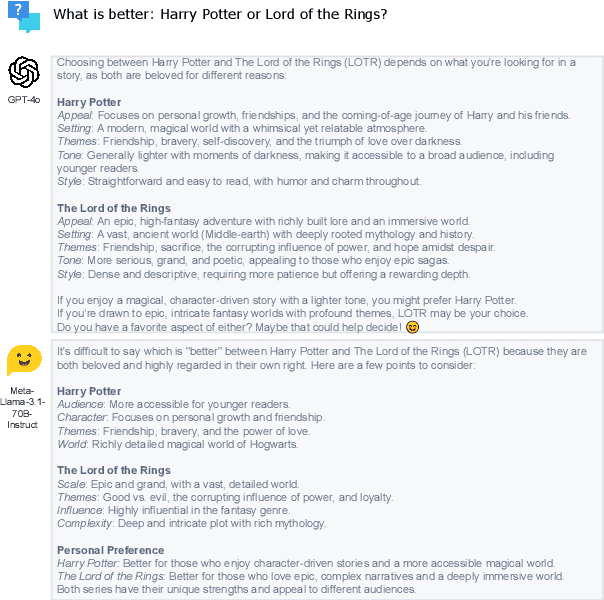
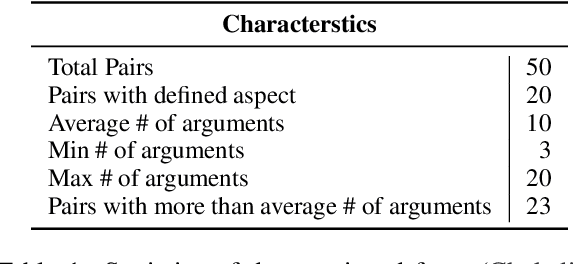
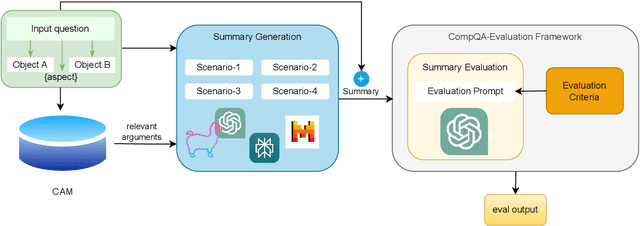

Abstract:In this paper, we aim to solve the problems standing in the way of automatic comparative question answering. To this end, we propose an evaluation framework to assess the quality of comparative question answering summaries. We formulate 15 criteria for assessing comparative answers created using manual annotation and annotation from 6 large language models and two comparative question asnwering datasets. We perform our tests using several LLMs and manual annotation under different settings and demonstrate the constituency of both evaluations. Our results demonstrate that the Llama-3 70B Instruct model demonstrates the best results for summary evaluation, while GPT-4 is the best for answering comparative questions. All used data, code, and evaluation results are publicly available\footnote{\url{https://anonymous.4open.science/r/cqa-evaluation-benchmark-4561/README.md}}.
SCoT: Sense Clustering over Time: a tool for the analysis of lexical change
Mar 18, 2022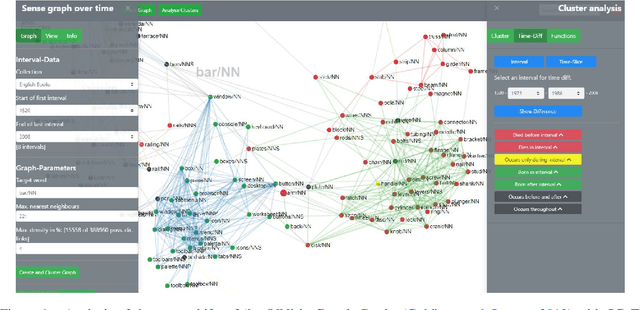

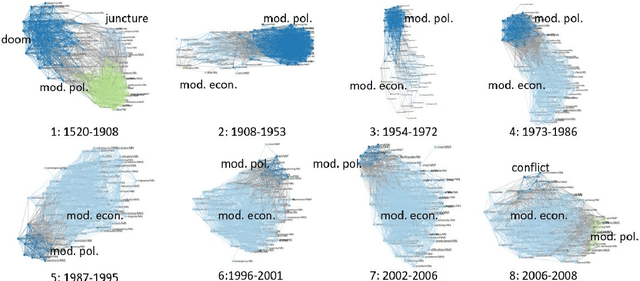
Abstract:We present Sense Clustering over Time (SCoT), a novel network-based tool for analysing lexical change. SCoT represents the meanings of a word as clusters of similar words. It visualises their formation, change, and demise. There are two main approaches to the exploration of dynamic networks: the discrete one compares a series of clustered graphs from separate points in time. The continuous one analyses the changes of one dynamic network over a time-span. SCoT offers a new hybrid solution. First, it aggregates time-stamped documents into intervals and calculates one sense graph per discrete interval. Then, it merges the static graphs to a new type of dynamic semantic neighbourhood graph over time. The resulting sense clusters offer uniquely detailed insights into lexical change over continuous intervals with model transparency and provenance. SCoT has been successfully used in a European study on the changing meaning of `crisis'.
* Update of https://aclanthology.org/2021.eacl-demos.23/
HHMM at SemEval-2019 Task 2: Unsupervised Frame Induction using Contextualized Word Embeddings
May 05, 2019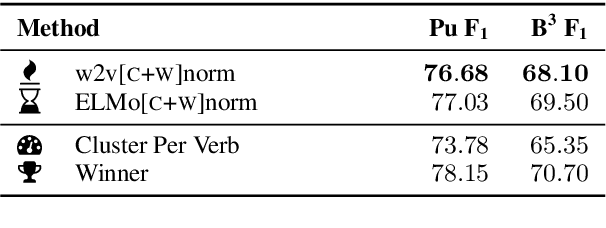
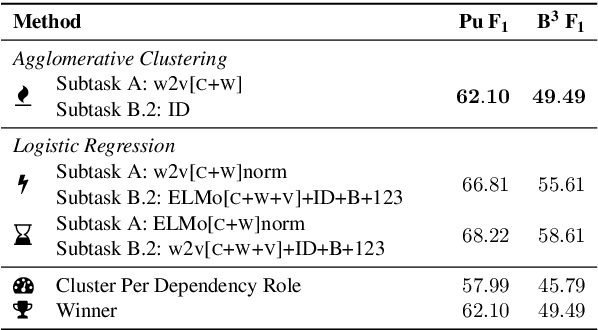
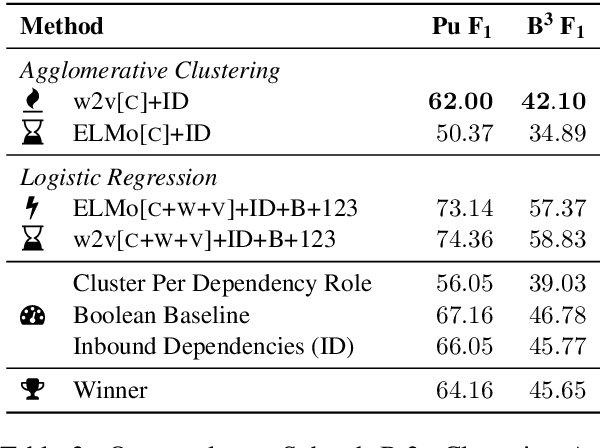
Abstract:We present our system for semantic frame induction that showed the best performance in Subtask B.1 and finished as the runner-up in Subtask A of the SemEval 2019 Task 2 on unsupervised semantic frame induction (QasemiZadeh et al., 2019). Our approach separates this task into two independent steps: verb clustering using word and their context embeddings and role labeling by combining these embeddings with syntactical features. A simple combination of these steps shows very competitive results and can be extended to process other datasets and languages.
 Add to Chrome
Add to Chrome Add to Firefox
Add to Firefox Add to Edge
Add to Edge